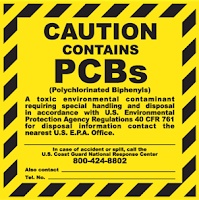Plastic Shopping Bag Levy: One of the Ways to Tackle the Waste Problem?
Thursday, November 3, 2016
Mita
CRPG has contributed to the policy
discussion regarding the plastic shopping bag levy that was introduced in
February 2016 in several cities in Indonesia.
The article, written by Dyah Paramita, was published in the Jakarta
Post. The following is an excerpt:
Plastic
waste is a problem. It is very
difficult to decompose naturally and when it burns, it releases toxins such as
dioxins and polycyclic aromatic hydrocarbons (PAHs)
that are very harmful for human health and the environment and is linked to the
development of cancer. Animals also suffer from the ingestion of plastic.
According to the Ministry of Environment and Forestry, the use of plastic bags
in Indonesia for the past 10 years is increasing. In the past decade,
Indonesians used approximately 9.8 billion sheets of plastic bags per year and
almost 95% of them ended up as waste. Based on a recent study published in the
Science Magazine written by Jenna R. Jambeck, the country ranks second (after
China) that mismanaged plastic waste followed by the Philippines, Vietnam and
Sri Lanka.
In
order to handle the growing problem in Indonesia, a policy regarding the shopping
plastic bag levy will be imposed on a trial basis. The policy is geared specifically for
consumers shopping in modern markets and retail outlets and will be imposed from
February 21, on the National Waste Awareness Day, to June 5, 2016, the World
Environment Day. At the completion of the trial phase, the regulatory framework
is expected to be completed by June 2016.
The local governments of 23 cities have shown interest in participating
in this movement (Jakarta Post
05/02/16). The Ministry of Environment and Forestry (KLHK) has proposed
the charge of Rp. 500 per bag. Of this amount, Rp. 200 will be repaid to the
consumers who return the plastic bags to the retailers and the rest (Rp. 300) will
be used by the retailers and the local municipality to fund environmental
activities. However, the price might vary and could range between Rp. 500-Rp.
5000, depending on the local policy (Kompas 26/01/16).
Will
the plastic bag levy tackle the waste problem? A plastic bag levy is not a new concept
in the environmental field. Several
countries have already introduced this policy, such as Taiwan, Ireland, Hong
Kong, Botswana, China and Denmark.
There
are different approaches regarding this matter. A levy on plastic shopping bags
can be imposed to encourage the change of the consumers’ behavior. In this
case, the main goal is to discourage consumers from using plastic bags, which will
decrease the amount of litter and reduce the volume of waste going to the
landfill. The amount of the levy is intended to deter consumers from using
plastic shopping bags and to encourage them to bring their own bag. Ireland applies this type of levy. The KLHK
seems to be proposing similar type of levy combined with the deposit-refund
system. The deposit-refund system means when a product, which potentially
pollutes the environment, is sold, a deposit should be charged simultaneously.
Thus, the deposit will be re-funded when the consumers return the empty
containers to the collection points. It is similar to the policy known as the
“bottle bill” in the United States. The consumers pay a deposit when they
purchase beverage containers and they are refunded their money when they return
the empty containers to the retailers or to the designated collections points.
One of the objectives of the deposit-refund system is to prevent improper waste
disposal.
Another
approach is imposing a Pigouvian tax on the plastic bag. The name is taken from
the British university professor, Arthur Cecil Pigou who coined the theory.
This way, the tax is intended to internalize the external cost of using the
plastic bags. The external cost in this sense is the environmental costs, which
include pollution, waste problems, and damage to wildlife. To implement this
type of tax, there are efforts to calculate the margin of the external costs
and determine the optimum level of the tax accordingly. This is also a way to
reduce pollution and protect the environment by discouraging excessive
consumption of plastic bags. This policy reflects what is called the
polluter-pay principle, meaning those who cause pollution should bear the cost
of managing it.
See
full article here



Recent Comments